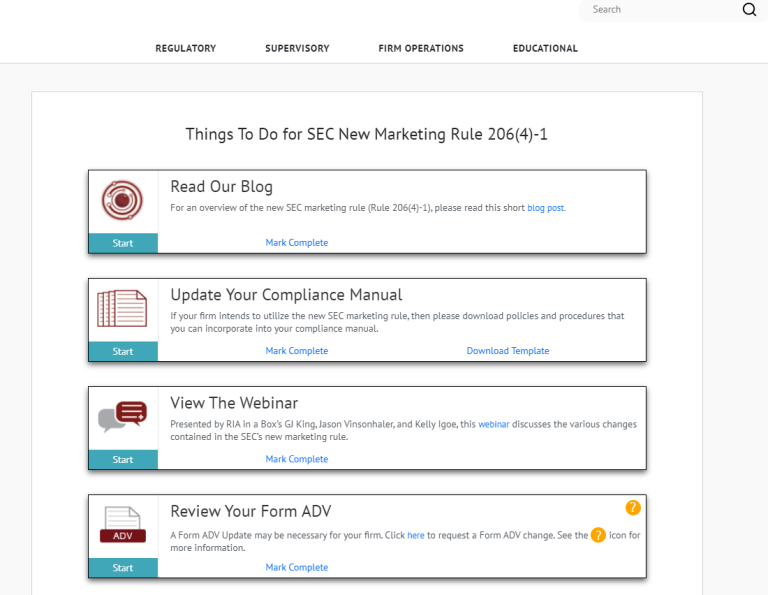We are excited to announce our new Securities and Exchange Commission’s (“SEC”) Marketing Rule module as an enhancement to our industry leading MyRIACompliance® software platform. The new enhancement was created in response to the SEC’s amended Rule 206(4)-1, under the Advisers Act, which addresses registered investment adviser (“RIA”) firms marketing their services to clients and investors (“The Marketing Rule”). This Marketing Rule amends the existing Rule 206(4)-1 (“The Advertising Rule”) and also replaces Rule 206(4)-3 (“The Solicitation Rule”).
MyRIACompliance supervisor users can view the SEC New Marketing Rule 206(4)-1 page in the Regulatory section. SEC-registered RIA firms will also be prompted with a calendar item in the MyRIACompliance platform pertaining to the new rule.

RIA in a Box developed the page for SEC-registered RIA firms with the following objectives:
- To be an informative resource for The Marketing Rule.
- Users can view our webinar and blogs which help break down the 430-page rule release into the key components related to compliance.
- To provide valuable tools and guidance on how to comply with The Marketing Rule.
- Supervisor users will have access to customized policies and procedures updated with the applicable marketing rule content to incorporate into their current manuals.
- Firms will be prompted to visit the “ADV Changes” page to request any necessary changes related to marketing activities.
The new SEC Marketing Rule Page, paired with our experienced team enables RIAs to navigate through the complexities of the new rule and effectively implement new polices and procedures as they begin to comply with the new rule.
As a reminder, the new SEC RIA Marketing Rule was officially published in the Federal Register on March 5, 2021. The rule became effective on May 4, 2021 and has a compliance deadline of November 4, 2022.
At RIA in a Box, it’s our mission to continuously innovate and enhance the MyRIACompliance experience to provide our clients with solutions to improve their operational efficiencies in an evolving regulatory landscape.
